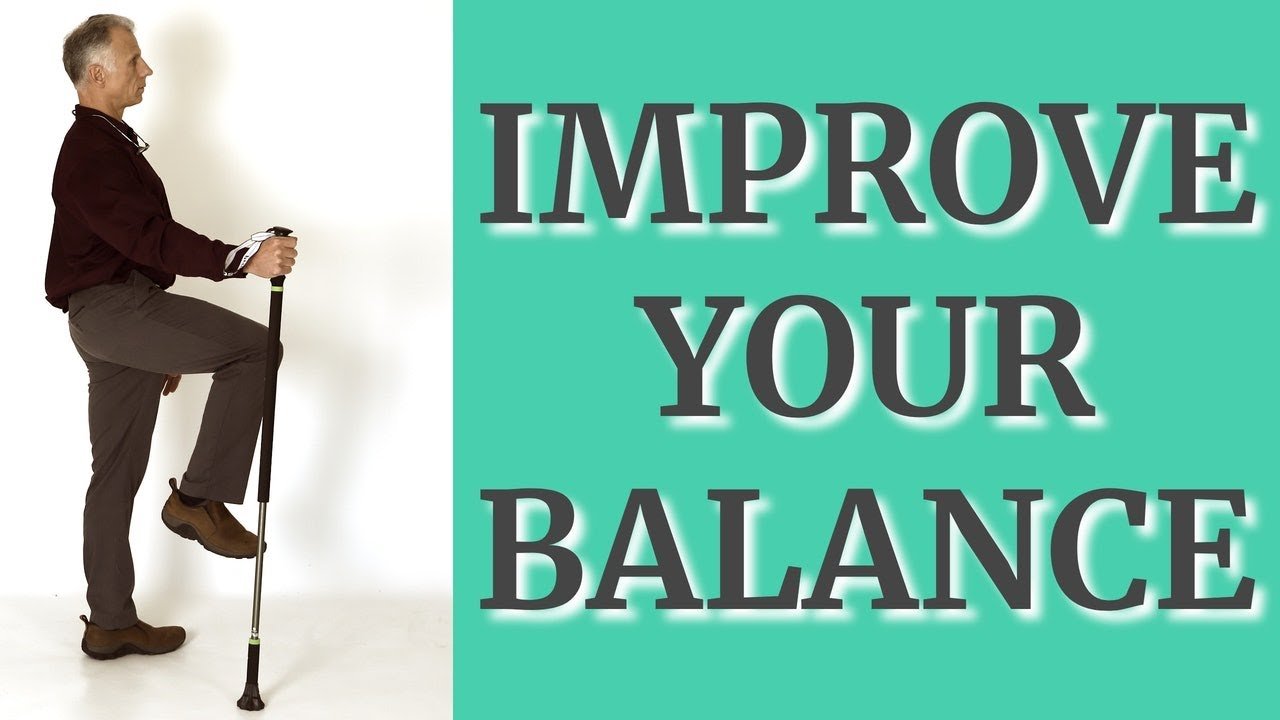Walking is a fundamental activity for daily living and an excellent form of exercise.
However, maintaining good balance while walking can be challenging for some, especially as we age.

Poor balance can lead to falls and injuries, impacting overall health and mobility.
In this article, we will discuss eight tips for improving your walking balance to help you stay steady on your feet and enjoy a more active lifestyle.
Why is Walking Balance Important?
Maintaining good walking balance is crucial for preventing falls, reducing the risk of injuries, and enhancing overall mobility.
Good balance improves confidence, allowing individuals to engage in more physical activities and lead a healthier lifestyle.
1. Practice Balance Exercises

Simple Balance Exercises
Incorporating balance exercises into your routine can significantly improve your stability.
Simple exercises like standing on one foot, heel-to-toe walking, and leg raises can enhance your balance.
Advanced Balance Exercises
For those looking for a challenge, try more advanced exercises such as yoga poses (Tree Pose, Warrior III) or using balance equipment like wobble boards and stability balls.
These exercises engage core muscles and improve overall balance.
2. Strengthen Core Muscles

Importance of Core Strength
A strong core is essential for good balance. The core muscles, including the abdominals, obliques, and lower back, provide stability and support for the entire body.
Core Strengthening Exercises
Incorporate exercises such as planks, bridges, and Russian twists into your workout routine to build a strong core.
These exercises can help improve your posture and balance while walking.
3. Improve Your Posture

Effects of Poor Posture on Balance
Poor posture can negatively impact your balance. Slouching or leaning forward shifts your center of gravity, making it harder to maintain stability.
Tips for Better Posture
Focus on standing tall with your shoulders back, head up, and weight evenly distributed on both feet.
Practice maintaining good posture throughout the day to improve your walking balance.
4. Wear Proper Footwear

Importance of Good Footwear
Wearing the right shoes is crucial for maintaining balance. Shoes that provide good support, fit well, and have non-slip soles can prevent falls and improve stability.
Choosing the Right Shoes
Look for shoes with a firm heel counter, ample arch support, and a wide toe box. Avoid high heels or shoes with slippery soles, as they can compromise your balance.
5. Engage in Regular Physical Activity

Benefits of Physical Activity
Regular physical activity keeps your muscles strong and joints flexible, which is essential for good balance.
Activities such as walking, swimming, and cycling are excellent for overall fitness and stability.
Incorporating Activity into Your Routine
Aim for at least 150 minutes of moderate-intensity aerobic activity or 75 minutes of vigorous-intensity activity each week.
Include strength training exercises at least twice a week to maintain muscle mass and improve balance.
6. Enhance Your Flexibility

Importance of Flexibility
Flexible muscles and joints can adapt better to changes in terrain and prevent falls.
Stretching exercises can help improve your range of motion and balance.
Flexibility Exercises
Incorporate stretching exercises such as hamstring stretches, calf stretches, and hip flexor stretches into your daily routine.
Hold each stretch for at least 30 seconds to gain the most benefit.
7. Stay Hydrated and Eat a Balanced Diet

Hydration and Balance
Dehydration can lead to dizziness and affect your balance. Ensure you drink enough water throughout the day, especially during physical activities.
Nutritional Support for Balance
Eating a balanced diet rich in vitamins and minerals supports overall health and muscle function.
Foods high in calcium, vitamin D, and protein are particularly beneficial for bone and muscle strength.
8. Use Assistive Devices When Needed

Benefits of Assistive Devices
Assistive devices such as canes, walkers, and walking poles can provide additional support and stability, particularly for those with balance issues or mobility impairments.
Choosing the Right Device
Consult with a healthcare professional to determine the most suitable assistive device for your needs.
Ensure that it is properly adjusted to your height and provides the necessary support.
Conclusion
Improving your walking balance is vital for preventing falls, maintaining mobility, and enjoying an active lifestyle.
By incorporating balance exercises, strengthening your core, maintaining good posture, wearing proper footwear, staying physically active, enhancing flexibility, staying hydrated, eating a balanced diet, and using assistive devices when needed, you can significantly enhance your stability and confidence while walking.
FAQs
Q1. How long does it take to see improvements in walking balance?
A1. Improvements in walking balance can vary depending on the individual and the consistency of practice.
Some people may notice improvements within a few weeks, while others may take several months of regular exercises and activity.
Q2. Can balance exercises help prevent falls in older adults?
A2. Yes, balance exercises are highly effective in preventing falls among older adults.
Regular practice strengthens muscles, improves coordination, and enhances overall stability, reducing the risk of falls.
Q3. Are there any specific exercises for improving balance in seniors?
A3. Yes, exercises like Tai Chi, standing on one foot, heel-to-toe walking, and seated leg lifts are particularly beneficial for improving balance in seniors.
Q4. Can poor nutrition affect my balance?
A4. Yes, poor nutrition can lead to muscle weakness and fatigue, which can negatively impact your balance.
A balanced diet rich in essential nutrients supports muscle and bone health, contributing to better balance.
Q5. How can I determine if I need an assistive device for walking?
A5. If you frequently feel unsteady or have a history of falls, it is advisable to consult a healthcare professional.
They can assess your balance and mobility and recommend an appropriate assistive device if needed.

